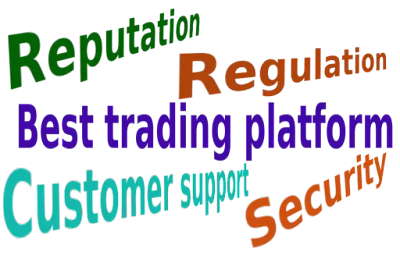Technical analysis
Technical analysis in forex is a common method of analyzing price movements in the market. Traders analyze charts with technical analysis for the purpose of identifying commonly used patterns in forex and trends in the price. This type of analysis helps us predict future price movements and many other things, including points on which we enter or exit positions. Stay with me. In this article, we will discuss the basics of technical analysis in the forex market and how to use it. let's begin.
What is technical analysis in forex?
Technical analysis is simply the study of historical data of charts, mainly to obtain technical information which help us predict future movements of the price. Most forex traders use technical analysis to identify patterns in charts and potential trading opportunities. this type of analysis provides traders with clues to market future behavior based on its past behavior. Traders use technical analysis to identify potential trading opportunities and manage their risk.
In forex trading, technical analysis becomes a particularly useful way of evaluating and analyzing historical price data and volume in the forex market. It's commonly used by most traders to identify entry and exit points based on chart patterns and trends, as it enables them to predict future forex market movements and helps them make better decisions.
To gain a comprehensive understanding of the forex market, we should employ technical analysis alongside fundamental analysis, which involves other different factors such as analyzing economic real-time data, financial markets, and geopolitical events and news. If all this is done as required, sure we will be able to make better-informed decisions in trading.
Technical analysis is based on three assumptions
- History repeats itself : Forex traders employ technical analysis based on historical chart data. As we know, most patterns on charts that have occurred in the past are repeated on them again and again in the future.
- Prices move in trends : Unlike support or resistance levels, the price of a currency pair is likely to continue moving in the same direction until the next support or resistance level, which would probably be a reverse point.
- Market action discounts everything : This assumption means that all current available data in the forex market is reflected at the same time in the price of a currency pair.
Basics of technical analysis
To effectively use technical analysis, we need to have a clear understanding of the basics, including :
- The current price of a currency pair and its historical data.
- The current direction in which price is moving, but keep in mind that the direction can be down, up or sideways.
- Support and resistance levels at which the price of a currency pair encountered difficulties in the past before breaking down or going up.
- Chart patterns can provide us with valuable insight to identify potential trading opportunities.
Types of technical analysis
In forex, traders use two types of technical analysis: chart analysis and indicator analysis.
- Chart analysis is the process of studying the price action using charts and looking for patterns and trends for the purpose of making informal trading decisions.
- Indicator analysis typically involves using commonly available technical indicators on the metatrader platform, mainly to analyze the price action of certain currency pairs. This technical approach helps traders identify future price movements.
Patterns in technical analysis
In forex trading, we use two types of chart patterns: reversal patterns and continuation patterns. These patterns are the most commonly used in technical analysis. Patterns can provide us with clues to future price movements. When a continuation pattern is fully formed on the chart, it suggests that the price will continue in the same direction, while a reversal pattern tells us that the price will reverse.
Technical indicators in forex
Forex traders use many technical indicators available on the platform. including the relative strength index (RSI), moving averages (MA), the stochastic oscillator, and more other indicators. We employ Moving Average to identify trends, RSI and stochastic oscillator to identify wether a currency pair is overbought or oversold. You can read more about indicators in this article.
Keep in mind that risk management still an essential part in technical analysis, including using stop loss orders to limit the amount of potential loss, and choose carefully position size to be limited to a certain percentage of your account balance.
Common technical analysis tools
- Candlestick charts : are candles with a body and two tails drawn on the chart used to visualize price movement? These candles display the open, high, low, and close prices of the current currency pair for a given period of time. Candles provide traders with valuable information to identify potential business opportunities.
- Trend lines : are lines drawn on the chart connecting two or more points, usually summits (top) or bases (bottom). The trend line helps us identify the direction of the price and the support and resistance levels.
- Moving Averages : Moving averages are indicators calculated by averaging the price data over a specified period of time. This indicator is very useful because it helps us identify entry and exit points. You should understand how to use it correctly.
- Fibonacci Retracement : Fibonacci retracement is the most commonly used tool in the forex market, used particularly to identify support and resistance levels based on the idea of retracing a predictable level of price movements before continuing in the current direction.
- Relative Strength Index (RSI) : (RSI) is a momentum indicator used for measuring the strength of price action. The Relative Strength Index is used to identify if a currency pair is overbought or oversold at specific levels, such as support or resistance entry and exit points.
Advantages and disadvantages of technical analysis
Traders should be aware when using technical analysis in their trading strategy. We know it has advantages, but it also has several disadvantages.
Advantages
Technical analysis is used in the forex market, stocks, and commodities. Technical analysis helps us predict when to enter or exit a trade, maximizing our profits and minimizing losses. One of the advantages of using technical analysis is its statistical data, which makes it more objective and less subjective than other tools and methods of analysis.
Disadvantages
Technical analysis requires more time and effort to identify patterns accurately and analyze charts using common indicators, which should be practical for all traders. Technical analysis focuses only on historical price data, which may not always predict future price movements accurately.
Thank you for visiting this website, if you need support or help, feel free to contact us at contact us page. I hope you enjoyed your stay. Can I help you in any way?
Conclusion
Technical analysis is basically the most popular method traders use in the forex market to identify profitable trading opportunities and manage their potential risk. Technical analysis is based on the assumption that history repeats itself. This means that chart patterns are repeated frequently at some continuation and reversal points, such as support and resistance levels. Technical indicators can provide us with useful clues to future behavior and help us analyze the market to make the right decisions.





